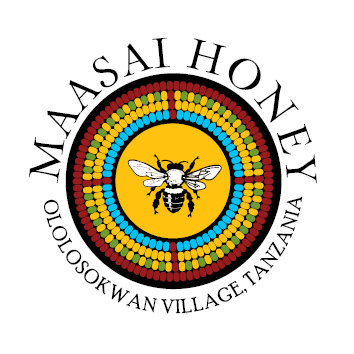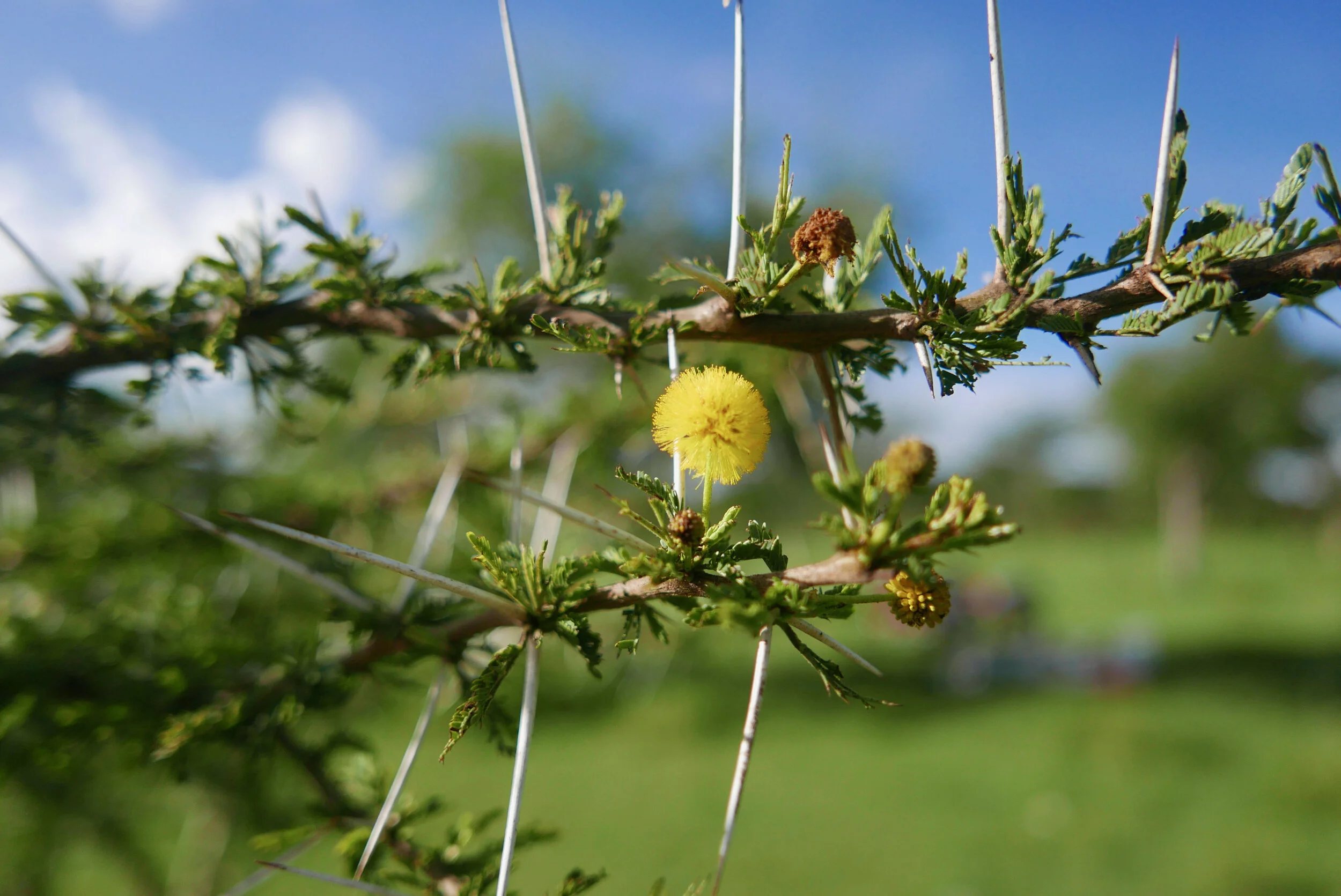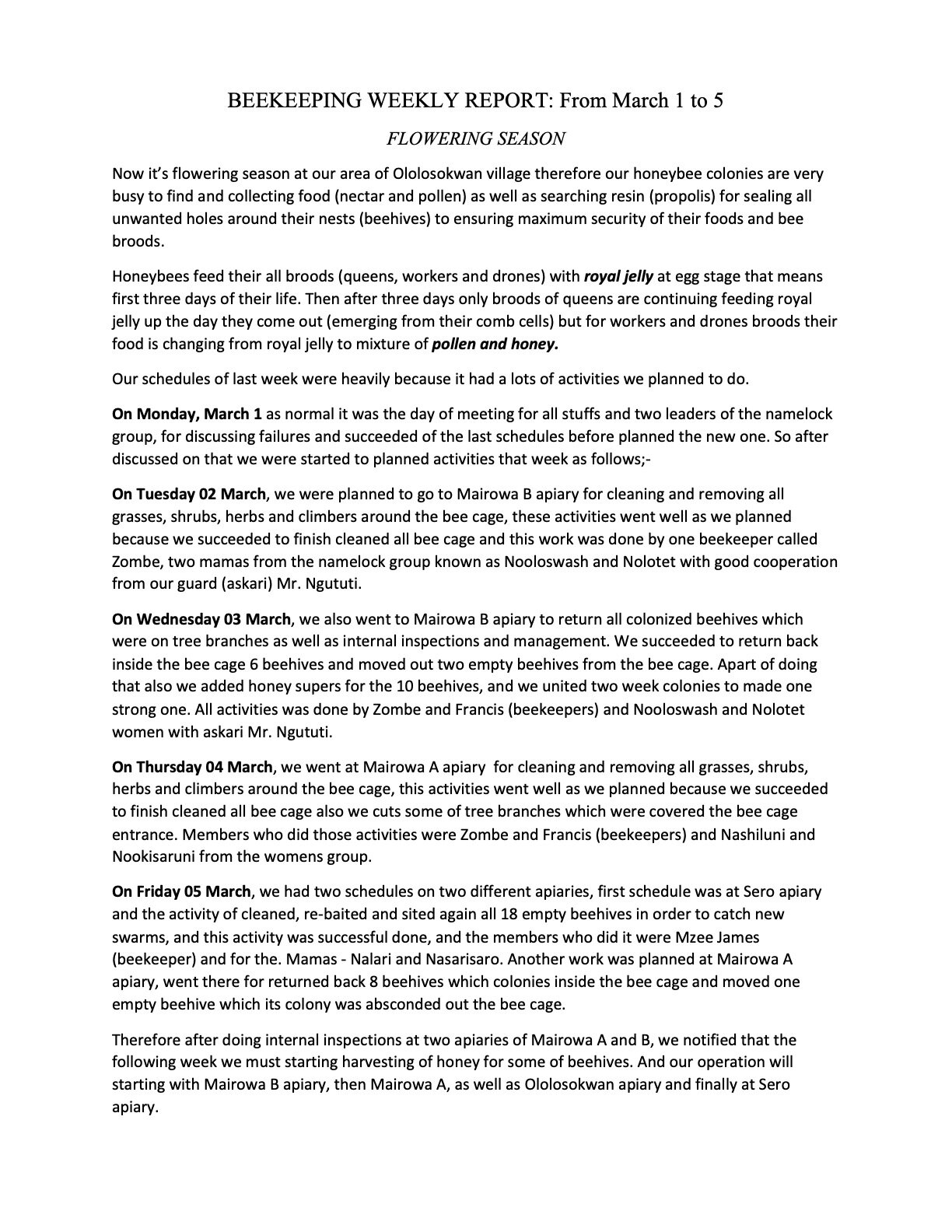Beekeeper's Report: Whats in Bloom?
Scientific Name: Acacia Hockii
English: White Thorn Acacia
KiMaasai: Ol-Jarbolani
Kiswahili: Mgunga (“Acacia”)
Scientific Name: Acacia gerrardii
English: Gerrard’s Acacia
KiMaasai: Ol-tepesi (Tanzania), Ol-debbei (Kenya)
Kiswahili: Mgunga (“Acacia”)
This tree, the “desert date”, may appear flowerless, but in fact it has many tiny flowers that are popular with the bees.
Scientific Name: Balanites aegyptiaca
English: Desert date
KiMaasai: Or-ngosua
Kiswahili: Mjuju (Swahili)
It’s right after the rainy season, when the flowers of many trees and shrubs are in bloom. Each year is different; if the rains have been plentiful there’s an abundance of flowering plants, but if the season has been sparse this may mean less flowers. It’s at this time, a bit like Spring in the Serengeti, that bees are actively foraging - gathering nectar and pollen from the flowers.
Currently in Ololosokwan Village, they have just passed a productive rainy season and many plants are now in bloom. The majority of these are the savannah trees, including a diverse array of Acacia species. Acacia trees are widespread in the Serengeti, known for their umbrella tree tops and long, spiky thorns. They typically boast round, fluffy flowers - a source of both nectar and pollen for the bees.
Here are some of the trees currently in bloom in Ololosokwan. And for a seasonal update from our village beekeepers - read the latest beekeeping report!




